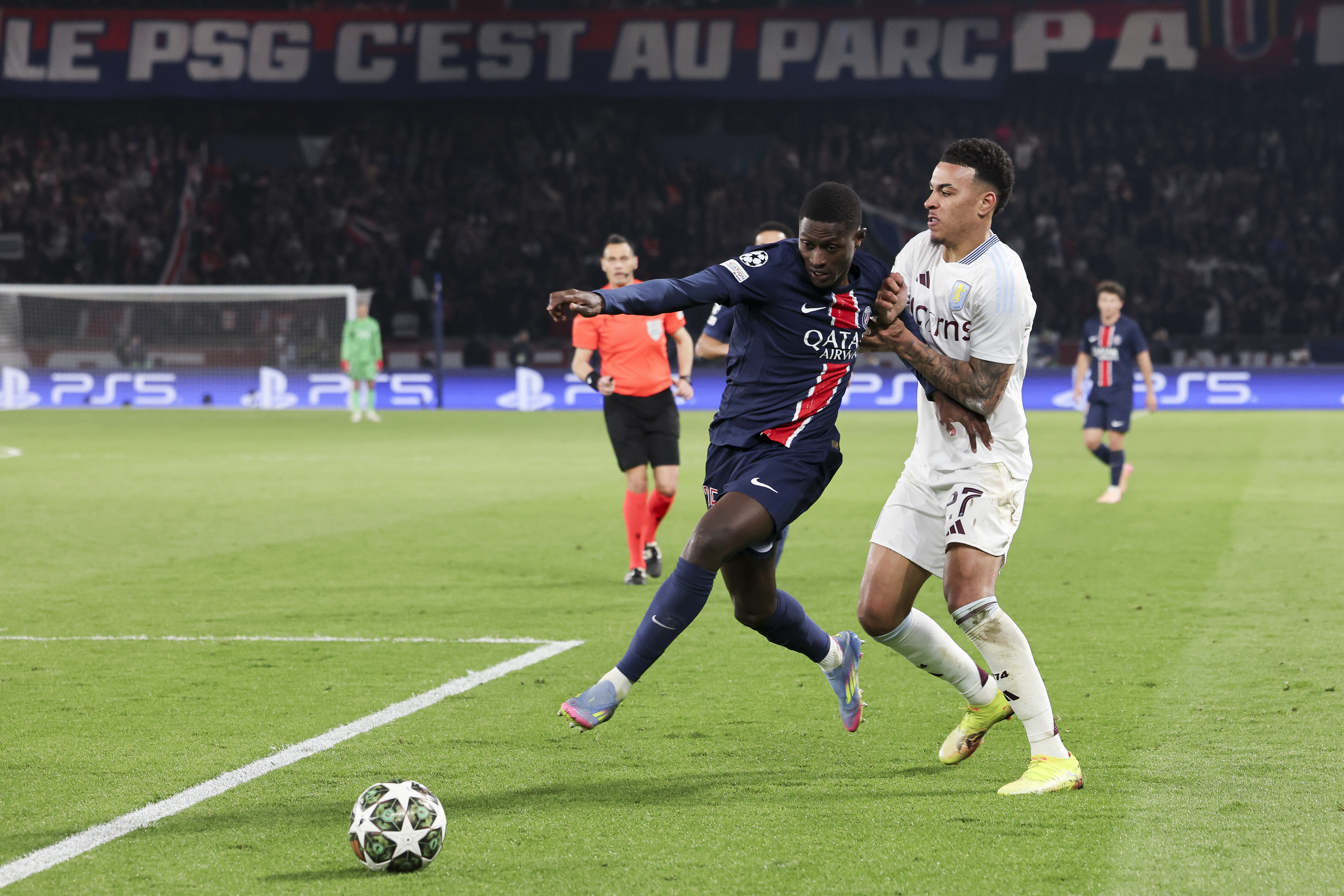Inside the Ronaldo factory
Mick Clegg spent six years turning Cristiano Ronaldo into football's greatest athlete. Now he wants to create his clone...on an industrial estate in Greater Manchester...
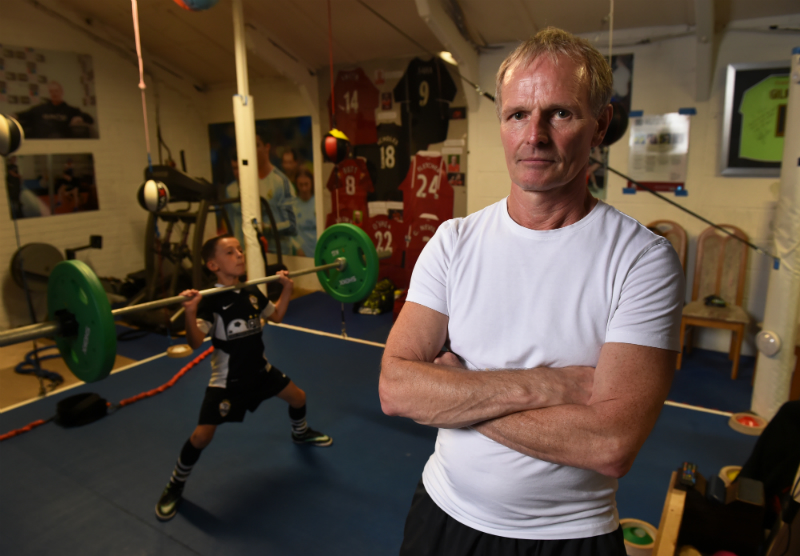
FFT glances nervously at a large Alsatian stalking an olive green industrial unit. High-rise flats stand tall in the afternoon sky and tracksuit-clad teenagers circle the surrounding neighbourhood on bikes.
It looks like many of the other lifeless metal containers littered across this working-class corner of Greater Manchester, but stepping inside feels like walking through Narnia’s wardrobe and into another dimension.
Large framed pictures hang from the breezeblock walls. Paul Scholes can be seen punching a pair of boxing mitts in one; Cristiano Ronaldo performs sit-ups in another. Roy Keane, Ryan Giggs and a host of former Manchester United stars also provide decoration.
Related story: Cristiano Ronaldo's training secrets
Get FourFourTwo Newsletter
The best features, fun and footballing quizzes, straight to your inbox every week.
Some are signed, while others bear messages of thanks to the owner of this little known sanctum. “You gave me arms with pull-ups, I had none before,” reads a personal ode from Michael Carrick.
Another, from Darren Fletcher, says cryptically: “I’ll never forget that hockey game, ‘get off.’” There’s also a heartfelt note of appreciation from Alan Smith, offering his thanks for the help he received during his battle to recover from a serious injury.
Pull-up bars, squat racks and weights are all in view, as are several wooden gymnastic beams, agility ladders and hurdles. A top-less boxing dummy lurks in one corner waiting for its next opponent.
FFT is inside EliteLab. This training facility is the second home of Mick Clegg – the man responsible for sculpting Ronaldo’s chiseled physique during the Real Madrid man’s six years at Manchester United.
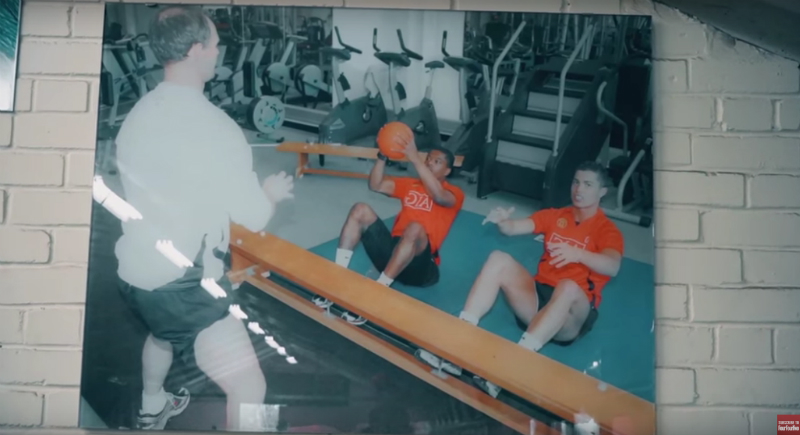
He spent 11 years as United’s power development coach between 2000 and 2011, but now works 15 hours a day, six days a week in this bubbling cauldron of training excellence working on a special project.
“I’m not working on mice, I’m working on live human beings,” he says with a smile and a glint in his eye, as he greets us with a cup of tea by a small kitchenette.
“I’m trying to create the next Ronaldo. I worked with him from the age of 18 until he left at 23. I now work with players as young as five-years-old – think how much more progress we could make. There’s so much more potential.”
It sounds like a sinister plot hatched by a mad scientist in a sci-fi movie, but Clegg is deadly serious. In 2010 he travelled to Canada and met brain experts to try and understand the science behind Ronaldo’s athletic and mental qualities.
Related story: Cristiano Ronaldo's training tips
“The most important thing in any sport is skill, but I realised that after that it’s speed,” he explains. “Look at Ronaldo getting to the ball first and scoring a goal or a boxer dodging a punch and throwing a knockout blow. You develop physical and mental speed by training the brain. The brain controls everything.”
The result of this newfound understanding was the creation of a training philosophy he’s christened the Seed of Speed, which combines traditional weight training and brain work using several cutting edge pieces of technology.
Clegg has a growing stable of academy players from Premier League and Football League clubs on which he practices his methods. We’ve been invited to watch a training session with two of the youngest members of his gym.
His subjects for the afternoon are eight-year-old Enrique Roca and his brother Rafa – who’s just six. FFT laughs as they arrive sporting immaculate combovers held in place with wet-look gel. The Ronaldo likeness is uncanny.

“Rafa loves Ronaldo, but Enrique’s favourite player is [Lionel] Messi,” reveals the boys’ father Carlos – a 32-year-old former professional footballer who played for Oldham and Carlisle before drifting into the semi-pro game.
Enrique has been on the books at Manchester City since he was just four-years-old. Remarkably, Rafa was only three when he was spotted by the club. Both boys train twice a week at the academy and play a game every Sunday.
“I try and bring them to the gym once a week,” Carlos continues. “I want to give them every chance of making it. The beauty of it is they don’t see it as training because it’s a lot of fun here.”
The session begins with Enrique and Rafa performing two exercises – deadlifts and power cleans - using five kilograms of weight. The sight of two children pumping iron is an unusual one, but not for Clegg, who trained his four sons to perform Olympic lifts from the age of six.
Related story: Performance lab: Cristiano Ronaldo
Their early physical education paid off as Michael went on to play for United’s first team and Steven the youth side. Mark became an international Olympic weightlifter and Shaun represented Team GB in weightlifting at the 2014 Commonwealth Games.
“It’s like building a house,” says Clegg. “You start by building a base of strength. When Ronaldo joined United, he had that. He’d done weights, swimming and used to run up the stairs at football stadiums to get stronger.
“But he never lifted heavy because we wanted him to be lean and quick, not bulky. We always worked with weights relative to his bodyweight. He weighed about 76kg at United and would bench press, squat and deadlift that for sets of seven repetitions.”
Enrique and Rafa then move on to a reaction-training device. The D2 machine requires them to turn off as many lights as possible in 60 seconds as they illuminate in a random sequence on a large black screen. They both record a score of 40.
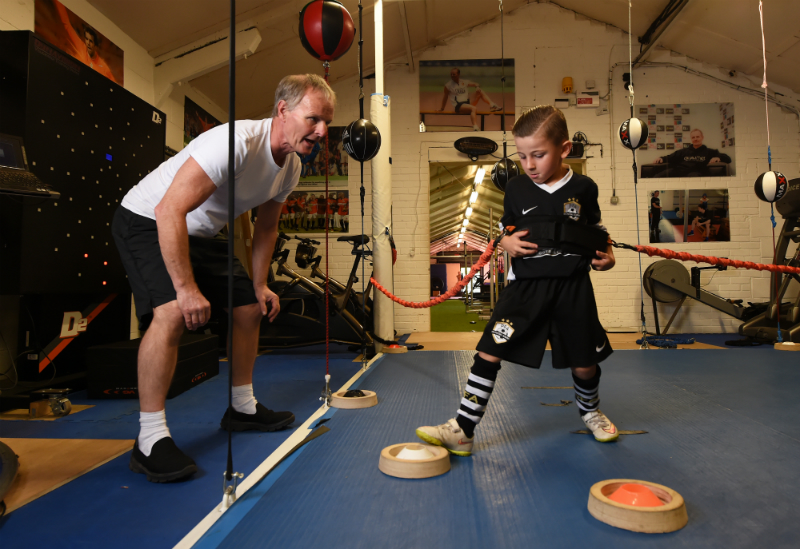
“The idea is to switch between big and intricate movements as you would do on a pitch,” adds Clegg. “Imagine Ronaldo sprinting down the wing and then throwing a step-over. He used a similar type of machine to this after training to improve his reactions.”
Next up is another flashy looking piece of tech. Six circular discs called Fitlights are lined up on the floor. They light up at regular intervals and must be erased with a swipe of the feet over the top of the spheres.
“We’re trying to recreate a game situation,” Clegg continues. “Players are constantly faced with tight spaces where they have to react quickly. It might be playing a one-two or pressing a player in possession. Ronaldo and Scholes were brilliant at reaction work.”
Related story: Paul Scholes' secret training weapon
Clegg has more than just a passing resemblance of a high school P.E. teacher; dressed in a plain white t-shirt, black shorts, white socks and black pumps. He barks instructions to the two boys and often carries with him a large wooden stick – though he insists it’s just a prop. But like with most things in his gym, there’s a method behind his manner.
“You need to develop players emotionally and put them under pressure to see how they respond,” he says after ordering Enrique to do five press-ups for knocking over one of the lights. “That’s why I loved Ronaldo – he worked under such pressure.
“Imagine you have two bosses at work, one is Alex Ferguson and the other is Roy Keane. They’re highly critical people, because they want to get the best out of you. He got hammered every day by Fergie, Keane, the fans and the press. But on a Monday morning at 9am he’d say ‘right, what are we doing today? He was strong enough to say ‘fuck that, negative emotions won’t beat me.’”
Thankfully, Enrique doesn’t burst into tears. Instead, he moves on to his next exercise – the bungee box. “Red, yellow, black!” shouts Clegg, as he instructs him to run and touch a series of coloured cones with the side of his foot. Two ropes attached to a harness wrapped around his waist provide resistance to train balance and acceleration.
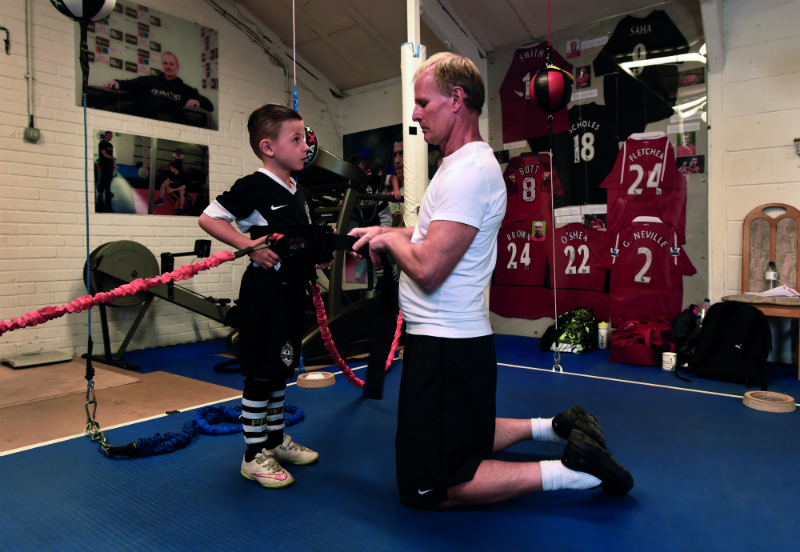
“I’m working him hard physically, but then I’m testing him mentally. The more tired he gets, the harder it is for him to remember the sequence. Late on in a game, Ronaldo has to run, control the ball and keep an eye on defenders and his team-mates. That’s a lot of brain work – we have to test the brain’s ability to work when it’s tired.”
The intensity of the session relents briefly as the Alsatian we encountered a little earlier enters the room and distracts Enrique and Rafa. It’s a timely reminder they’re only kids. FFT is relieved to hear five-year-old ‘Rocky’ is in fact a mild mannered pet who last month wore a bow tie at Mick’s wedding.
Clegg uses the break to recall a tale about Ruud van Nistelrooy. “He once told me his concentration levels were so high inside the 18-yard-box, he would fall into an unconscious state during the split second he hit a shot.
“He could score, hit it over the bar, get tackled, anything, but he wouldn’t know what happened. Then he’d come back to conscious reality. The concentration levels you need to get in that zone are very, very high. Ronaldo understood that and learned from it.”
Related story: How Southampton train their players' brains
The last of Clegg’s brain training gadgets is the Neurotracker. Enrique and Rafa are tasked with tracking four balls amongst a pack of eight for six to eight seconds as they bounce across a screen. They then have to pick out those four balls once they’ve stopped.
“This trains the boys to multi-task,” says Clegg. “In a game, there are 22 players, a referee, the crowd and a white ball flying round at 100mph. Players need to have brains capable of processing multiple pieces of information at the same time.
“Ji-Sung Park recorded the highest ever score on it, but Scholes was consistently the best. He had incredible peripheral vision and that translated on to the pitch. His brain was faster than other players.”
The brothers end the session by running through agility ladders laid out on the floor and trying to curl a ball into a tractor tyre. As they do so, FFT is eager to hear Clegg’s vision of what the next Ronaldo could look like.
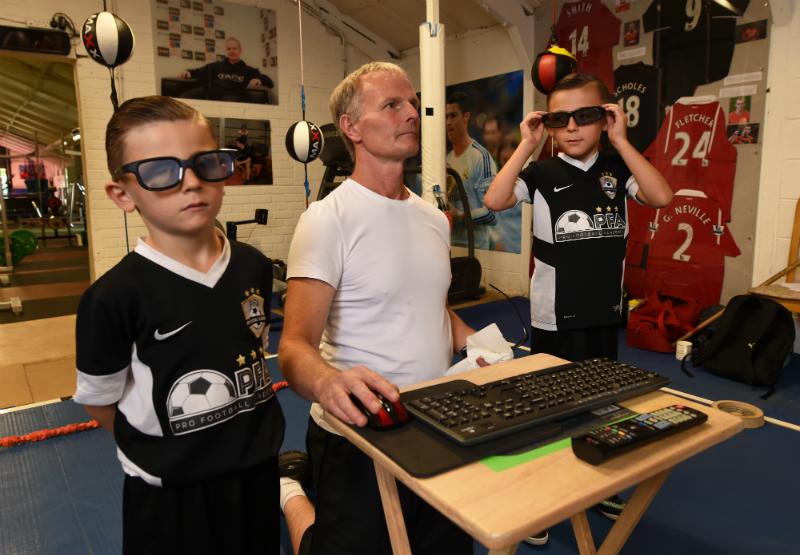
“Designing a player takes a lot of thought,” he says. “Physically, you want them to be tall, low in bodyweight, but not too strong. You don’t want them to be overmuscled. More strength means less speed. It’s a balancing act.
“Mentally, I want to develop a super-powered brain for athletic performance. I want a brain that understands balance, concentration, reactivity, agility – everything at once, at speed. I want to create a brain that knows what decision to make under pressure.”
But how realistic is his ambition of creating another Ronaldo? “I get a lot of lads who come in and say they want to be the next Ronaldo,” he continues. “They say they’ll work as hard as him, but in reality they’re looking for a magic exercise that will turn them into him. There is no magic wand.
Related story: Manchester United's gym club
“Ronaldo’s secret was hard work and variety. He was in the gym every day and trained intelligently for five-and-a-half years. He observed what Keane, Scholes, Van Nistelrooy and Giggs did and applied it to his own training.
“It’s all about finding the right person. I need someone like Cris who will come in and say ‘show me what I need to do. I’ll do all the work, but you tell me what I need to do’. When I get one of them, the sky is the limit.”
For now, the next Ronaldo remains an elusive ghost, but Clegg’s philosophy is already having an impact. Last year he worked with a 15-year-old boy called Thomas Sang. He hadn’t kicked a ball in 18 months after a series of injuries, but was signed by Manchester United after six months at the gym.
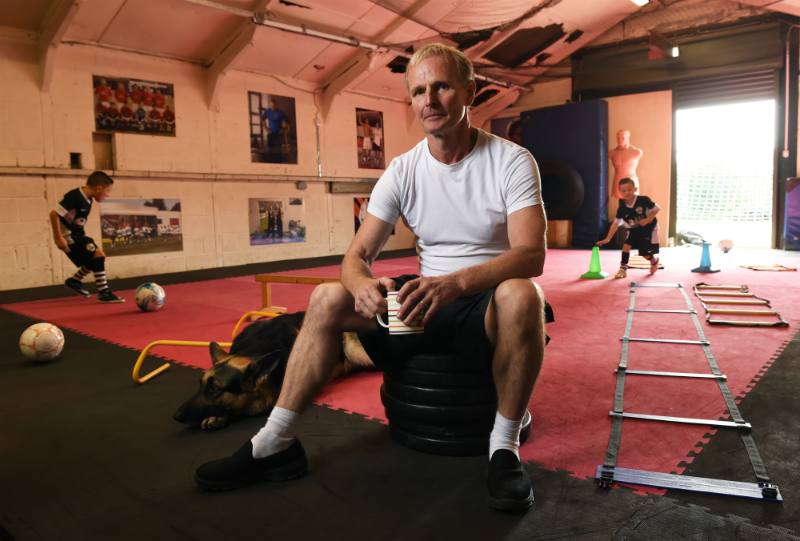
“I’ve trained my sons who have played sport to a high level, I’ve worked for United for 11 years, I’ve worked with Ronaldo, I’ve worked with the lads in this gym - I know what I do works, he says as FFT prepares to leave.
“Who knows if I’ll find another Cristiano? I’m in no rush. I’m 60 next year, but I plan to work in this gym until I die. I’ve started delivering lectures in Poland and Ireland to teach coaches how to coach the Seed of Speed. If I don’t, maybe someone else will get the opportunity to create the next Cristiano.”
Something tells us he'll beat them to it.
